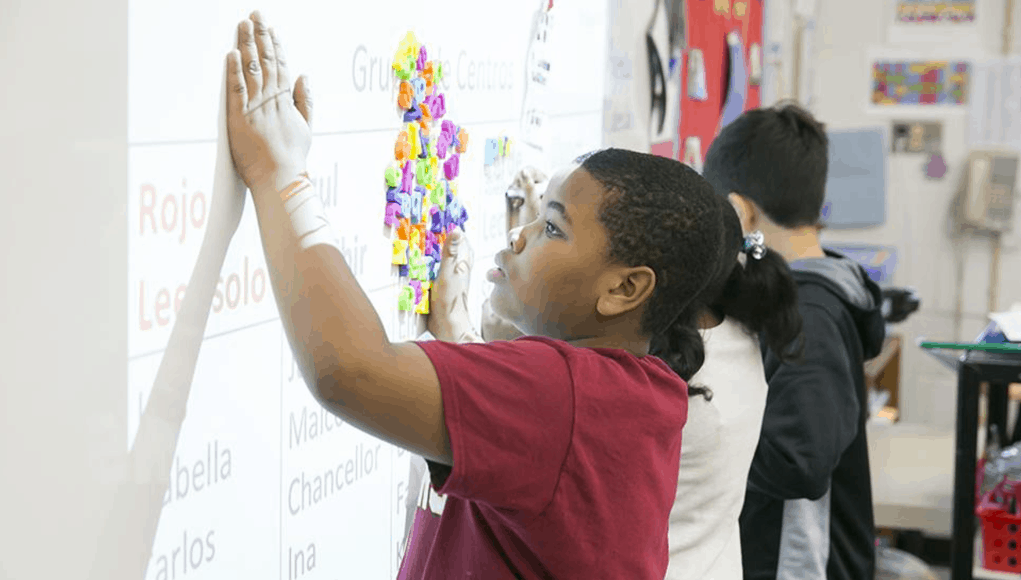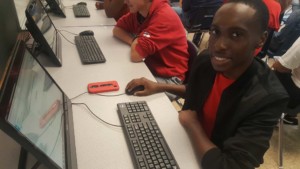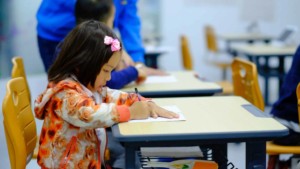Preparing #LifeReady Students Through World Language

By Renee A. Foose, Ed.D.
Research demonstrates that learning a second language supports students’ intellectual growth, academic achievement and their earning power.
Students learn to think more flexibly, sharpen their listening and memory skills, and appreciate other cultures as they gain fluency in a world language. Those entering the workforce with second language proficiency can expect to earn 10 to 15 percent more than their monolingual peers.
The Howard County Public School System (HCPSS) built a World Language Program to equip every student with at least intermediate proficiency in a world language by the time they graduate high school. The promise of our preparation is that students will have skills to use for a lifetime.
The HCPSS World Language Program focuses on building communicative skills, so students can enter today’s increasingly globalized world with in-demand, marketable skills and the cultural competency for college and careers.
So how do we get our students #lifeready? We focus on literacy and learning to use the language with great instruction and modern technology tools to increase engagement.
First, proficiency is possible through language immersion and continued study. World Language teachers strive to conduct their classes in the target language 90-100 percent of the time, creating a language- and culture-rich learning environment. To provide early and continued language learning, the school system recently began offering many of its students world language instruction in continuum from Pre-K through high school.
The HCPSS World Language Program also supports the school system’s strategic plan, Vision 2018, through its focus on a rigorous Pre-K–12 world language instructional program and equitable access to rigorous coursework. Our proficiency-based curriculum is based on the American Council on the Teaching of Foreign Languages World-Readiness Standards for Learning Languages, which encourage equity and access for all students.
World language is offered to all Howard County public school students, whether they are English language learners, heritage speakers, gifted/talented or in special education. To better serve the wide range of Howard County students, the World Language Program leverages the power of technology to support differentiated, extended and accessible learning.
Differentiated: Language teachers at all levels provide differentiated learning experiences, so students learn at the level that’s best for them. Students in one class can learn simultaneously about the same themes at different levels of rigor, based on individual readiness. For example, middle school language teachers are implementing a model of blended learning called station rotation. Students at one station could be working independently on a skill-building activity online, while others examine online articles, and a third group uses the Piktochart app to collaboratively create an infographic in a world language. Dedicated World Language laptop carts at middle schools support station rotation instruction.
At the elementary level, this kind of flexible learning is enhanced with technology tools, such as BrightLink projectors that enable interactive whiteboard activities and classroom iPads used in learning centers. Examples include students recording each other’s speaking performances, listening to an e-book in the world language and practicing writing skills with interactive apps.
Extended: All World Language students have online textbooks, enabling easy access to learning beyond the classroom and encouraging students to build proficiency on their own. For elementary students, with 30 minutes of daily Spanish instruction, their online access provides extra opportunities to revisit lessons in their interactive textbook, listen to and read a story, play language games, learn vocabulary and more.
Through HCPSS’ learning management system, students at all levels can access engaging homework assignments with the use of online polls, discussion forums, embedded rubrics, and audio and video recordings of their performances. The school system encourages all students to utilize their online language materials by providing computer access at after-school programs and during other school time.
Accessible: Technology provides better access to world language instruction for all students. For special needs students, teachers leverage the power of technology tools to remove barriers to language learning. For example, teachers use a program that translates language into braille to support language learning for visually impaired students, as well as a wide variety of accessibility tools, such as text-to-speech and speech-to-text, to modify instruction.
Synchronous distance learning has enabled us to offer language classes not physically available in specific schools. This year, 144 students across eight high schools are taking Chinese 1, 2, 3 and 4, and Advanced Placement courses by blending both live online and face-to-face formats. Students have the required technology through a variety of ways: students can use their own devices since we’re a BYOD school system at the secondary level, students can receive loaner devices and some classes meet in school computer labs.
The strength of our World Language Program is possible through our teachers, who have access to customized, high-quality professional development opportunities in technology, content, pedagogy and more. We also offer Spanish for Educators professional learning courses, so teachers can better communicate with our growing number of Spanish-speaking families. The course, provided through a blended online and in-person model, has been so popular we added level 2 courses this year.
The HCPSS World Language Program continues to implement innovative practices, supported by technology, to prepare students for the future. In the end, we want our students to graduate with skills that are résumé and career differentiators, but most importantly, with global perspectives, so they’re ready to take on this diverse and dynamic world regardless of where they are throughout their lives.
Renee A. Foose, Ed.D., is Superintendent of Schools for the Howard County Public School System. Follow her on Twitter: @SuperHCPSS
Feature Photo by Nick Griner, Howard County Public School System
Stay in-the-know with all things EdTech and innovations in learning by signing up to receive the weekly Smart Update.





0 Comments
Leave a Comment
Your email address will not be published. All fields are required.